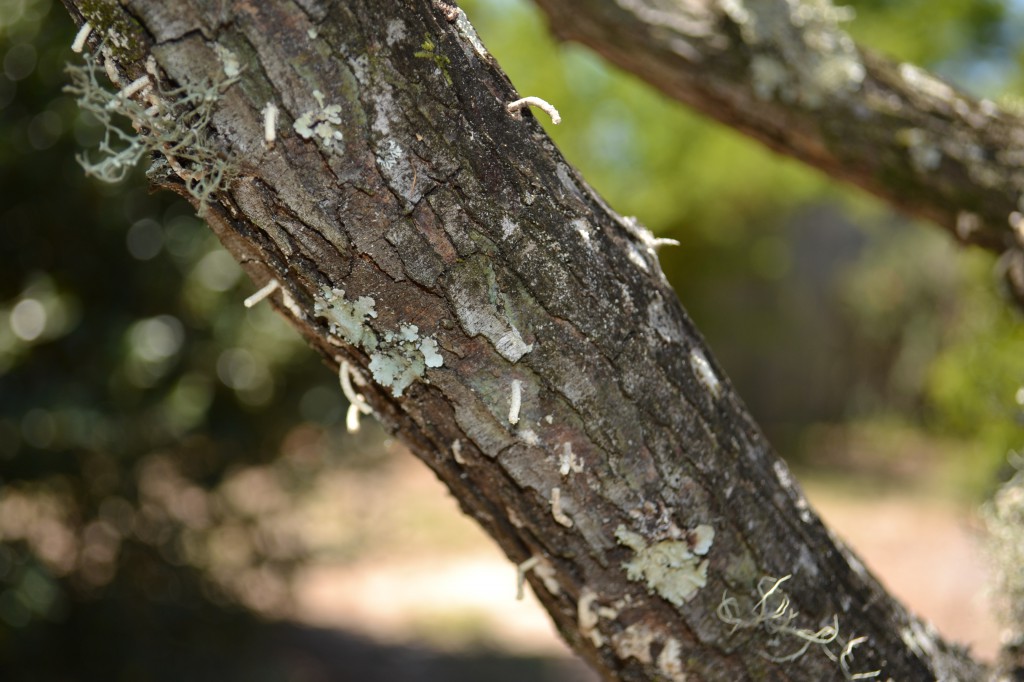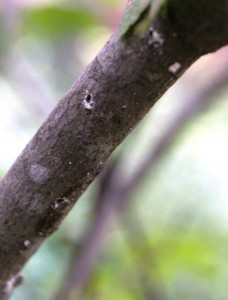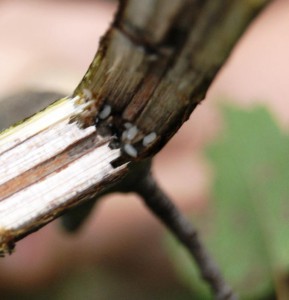
Frass (toothpick-like projections) extends from entry holes on a Jeruselum thorn damaged by cold temperatures. Photo by Beth Bolles, UF IFAS Escambia Extension
Winter injury and stress to many trees has attracted granulate ambrosia beetles to landscapes. These beetles mostly prefer weakened trees and cut stumps/logs but have been found to attack some healthy trees as well.
Adult beetles are very small, only about 1/16 inch long and bore into branches and trunks of many woody plants. They will push out small ‘strings’ of boring dust which look like toothpicks. These strings successfully protect the beetles as they establish galleries for laying eggs and rearing young within the tree. The adult females will introduce a fungus (ambrosia) into these galleries on which both the young beetles and adults feed.
Many beetles will bore into a plant, mostly along the trunks. Plants may be ultimately killed, not by the beetles but by the fungi that interfere with the movement of fluids within the tree.
If you notice a tree infested with ambrosia beetles, it is best to remove the plant quickly. Remove all infested plant parts from your landscape. If you have a special plant that you want to save, you may be able to cut it back close to the ground, and allow it to resprout. It would be necessary to monitor the remaining portion carefully for reinfestation and treat with an approved insecticide to prevent beetle entry.
- Garden Spider Egg Sacs - October 23, 2025
- Saving Malabar Spinach Seeds - October 17, 2025
- Improve Butterfly Habitat with Trees - September 18, 2025


